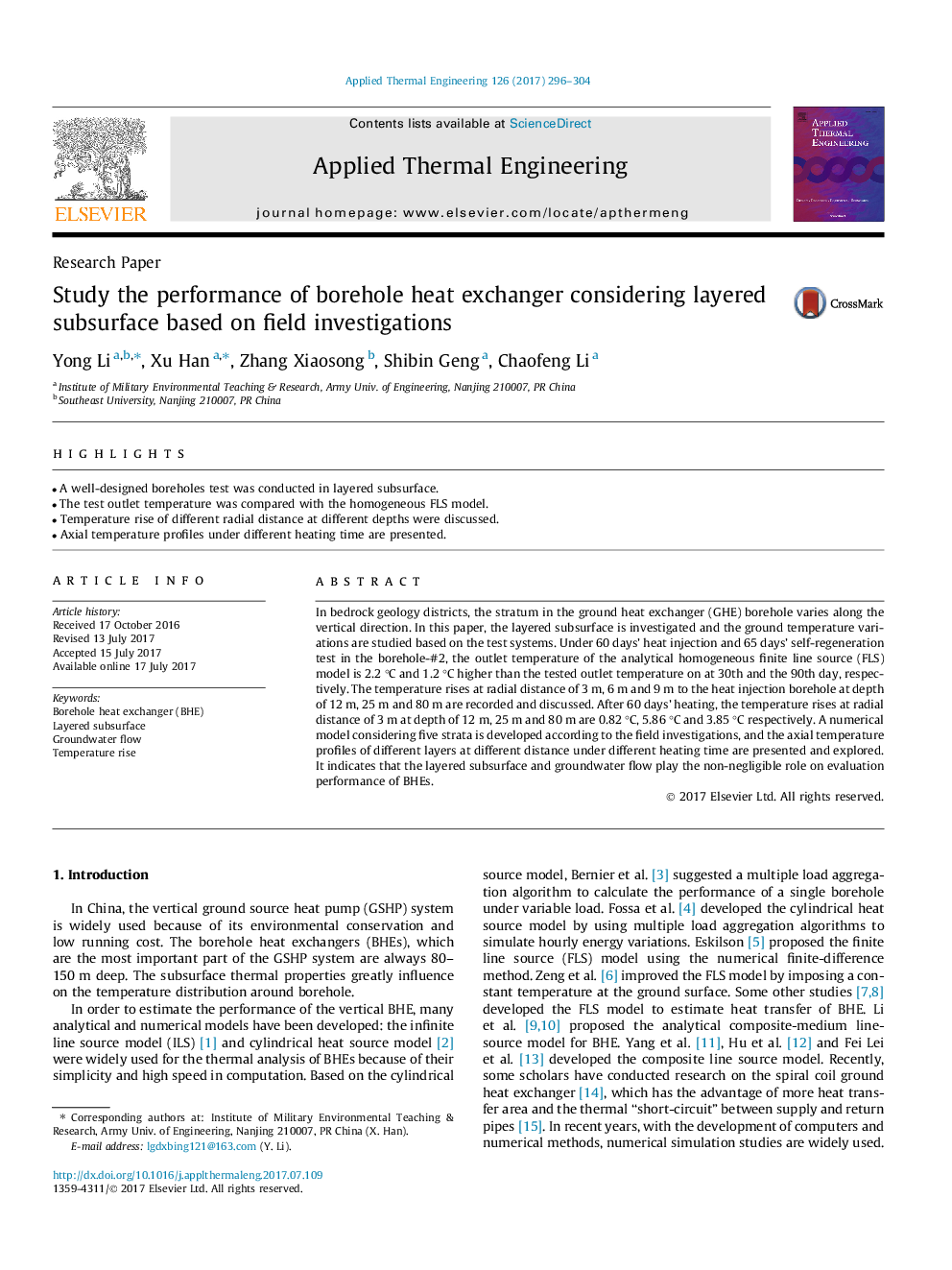| Article ID | Journal | Published Year | Pages | File Type |
|---|---|---|---|---|
| 4990436 | Applied Thermal Engineering | 2017 | 9 Pages |
Abstract
In bedrock geology districts, the stratum in the ground heat exchanger (GHE) borehole varies along the vertical direction. In this paper, the layered subsurface is investigated and the ground temperature variations are studied based on the test systems. Under 60 days' heat injection and 65 days' self-regeneration test in the borehole-#2, the outlet temperature of the analytical homogeneous finite line source (FLS) model is 2.2 °C and 1.2 °C higher than the tested outlet temperature on at 30th and the 90th day, respectively. The temperature rises at radial distance of 3 m, 6 m and 9 m to the heat injection borehole at depth of 12 m, 25 m and 80 m are recorded and discussed. After 60 days' heating, the temperature rises at radial distance of 3 m at depth of 12 m, 25 m and 80 m are 0.82 °C, 5.86 °C and 3.85 °C respectively. A numerical model considering five strata is developed according to the field investigations, and the axial temperature profiles of different layers at different distance under different heating time are presented and explored. It indicates that the layered subsurface and groundwater flow play the non-negligible role on evaluation performance of BHEs.
Related Topics
Physical Sciences and Engineering
Chemical Engineering
Fluid Flow and Transfer Processes
Authors
Yong Li, Xu Han, Zhang Xiaosong, Shibin Geng, Chaofeng Li,
